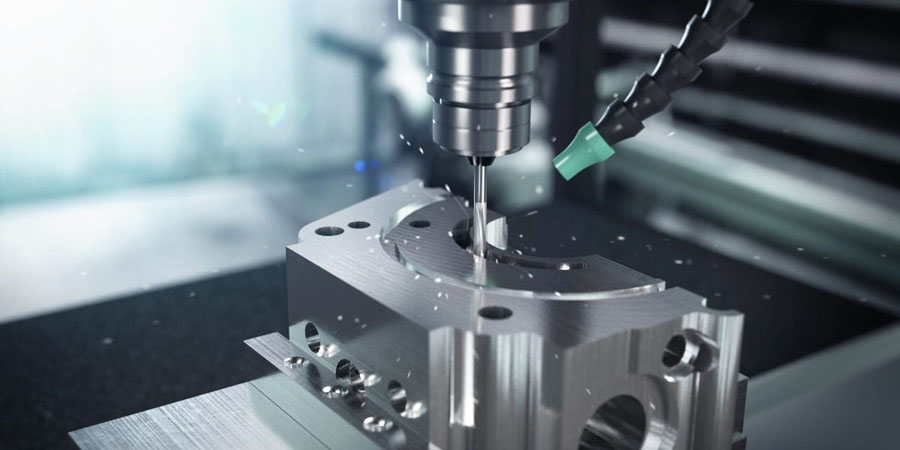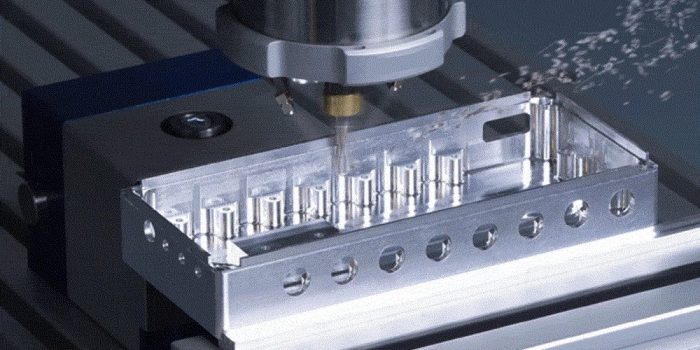The 5-axis machining has high efficiency and high precision, and the workpiece can be clamped in one time. It is suitable for the processing of modern molds such as auto parts and aircraft structural parts. 5-axis machining is not only used in civil industry, but also widely used in aerospace, military, scientific research, precision instruments, and high-precision medical equipment industries. It is a high-tech method to make the impossible possible. It can be processed or produced for all spatial surfaces or unusual shapes. It can not only complete the machining tasks of complex parts and industrial products, but also quickly improve the processing efficiency and shorten the processing flow.
But it also has disadvantages. Today we will introduce the advantages and disadvantages of 5-axis machining in detail.
Advantages Of 5-Axis CNC Machining
Maintain Optimal Cutting And Improve Cutting Conditions
In the three-axis cutting mode, when the tool path moves to the top or the edge of the part, the cutting performance gradually deteriorates. In order to maintain the best cutting conditions here, you need to move the turntable. And if we want to completely process an irregular plane, we must use a tilted turntable to move the turntable multiple times in different directions. 5-axis machining can also achieve better surface quality by avoiding the center line speed of the ball cutter being 0.
Time-Saving | Reduce Processing Time
The 5-axis CNC machine will help you save a lot of time in the universal machining center. Most of the parts manufactured in CN processing workshops need to be processed on five sides. Axis CNC milling will help to complete work quickly and efficiently in production. A little bit of a single setting is required, which helps to save cycle time and money. Therefore, it is a cost-effective solution that accelerates the time to market for your final product.
In 5-axis machining, the tool is used to maintain the vertical state of the machining surface of the complex mold, which can greatly improve the utilization rate of the spindle. The 5-axis machining principle is also suitable for bevel side milling, which can eliminate rib-like lines caused by ball cutters. This makes the surface quality of the mold more ideal, and also reduces the need to clean the surface of the mold manually.

Improve Machining Accuracy
The accuracy of 5-axis CNC milling has been improved because it requires minimal settings. Additional settings will only cause more errors. It also helps to extend the life of certain tools. This is mainly a result of shorter tools.
Through the 5-axis machining technology, the problem of multiple repositioning accuracy of the workpiece at complex angles is solved. It not only shortens the time, but also greatly improves the machining tolerances many times. The high cost of manufacturing multiple fixtures in the traditional way is also saved. 5-axis machining can process complex parts, such as drilling, taper machining, cavity recesses on complex surfaces, etc., which cannot be achieved by traditional machining methods most of the time.
High-quality Surface Treatment |Complex Shapes
This type of configuration also helps to create a surface with a high-quality finish. The position of the part is closer to the cutting tool in a 5-axis machine. The last two axes will allow the use of shortcut tools that will not vibrate too much, which will result in a high-quality surface finish.
Another advantage of 5-axis CNC machines is that they can cut complex shapes. All five axes require various parts. The extra movement in this type of arrangement provides room for manufacturing angles and arcs. In the past, they needed additional settings and unique fixtures.
High Productivity
5-axis machining can effectively reduce the machining time and auxiliary time of parts. It has a large spindle speed and feed range, so that the machine has a strong large cutting ability. Five-axis machining is entering the era of high-speed machining. The rapid movement and positioning of five-axis machining and high-speed cutting machining reduces the turnaround time of semi-finished products and improves production efficiency and accuracy.
Disadvantages Of 5-Axis Machining
Obviously, people have realized the advantages and importance of five-axis CNC technology in manufacturing and production industries. Once people encounter complex setbacks when designing and manufacturing complex curved surfaces, they will turn to five-axis machining technology. The main technical requirements of CNC machine tools are multi-axis, high-speed, good rigidity, and high power; the demand for the number of coordinates is mainly based on three to five axes. However, in the machining industry, the use of 5-axis machining to do some work is not as extensive as we think, for the following reasons:
The Cost Is Too High
On the one hand, the cost of purchasing a five-axis machine tool and the cost of the software required are much higher than the cost of an ordinary three-axis machining center. On the other hand, the maintenance of the machine itself is also more difficult than ordinary machines. These aspects also directly cause the cost of 5-axis machining parts to be much higher than ordinary 3-axis machining.

Complex And Difficult To Program
Because 5-axis machining is different from 3-axis, in addition to three linear motions, it also involves two rotational motions. The resulting spatial trajectory of the composite motion is very complex and abstract, and it is generally difficult to imagine and understand. For example, in order to process the required free-form surfaces in space, many coordinate transformations and complex spatial geometric calculations are often required, and the coordination of the movement of each axis must also be considered to avoid interference, collisions, and appropriate interpolation motions. To ensure the required machining accuracy and surface quality, programming is even more difficult.
High Technical Requirements For Operators
Five-axis machining is an advanced machining technology, and advanced technology requires the operation of higher-level talents. From single programming to machining operation, it is different from the usual three-axis machine tools. Therefore, highly skilled operators are required, which also means higher labor costs.



I found this article while looking for laser engraving, and it’s very well written.
I love your blog.. very nice colors & theme.
Thank you.